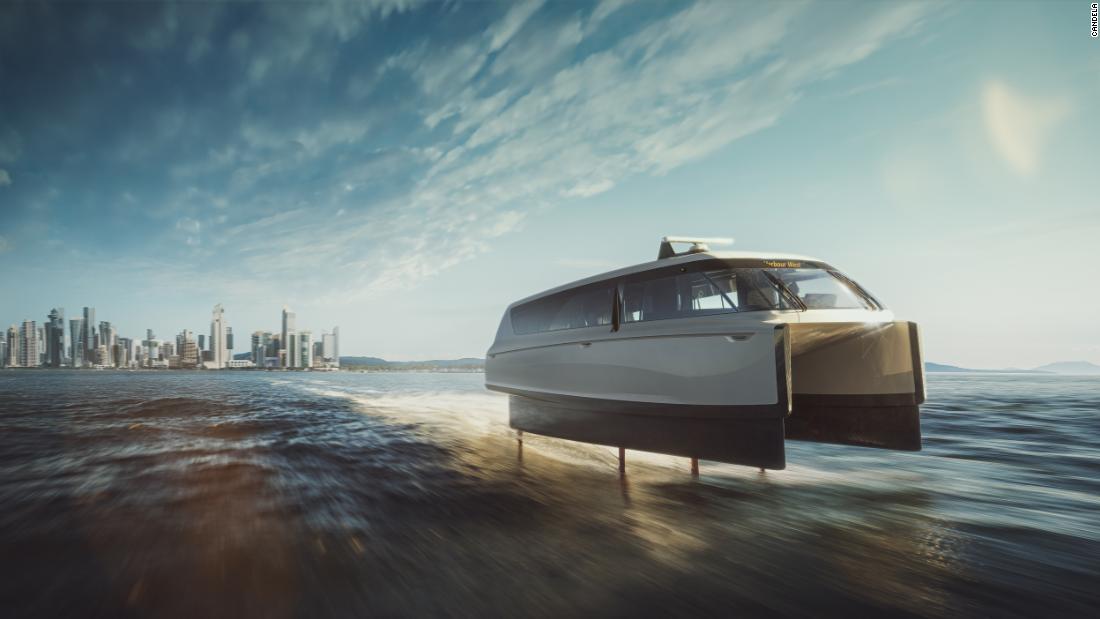
But one Swedish startup says its battery-powered boats can cut emissions while slashing journey times.
“What Tesla did was to add a lot of style to electric cars. We want to make a very attractive product because that’s going to drive the move towards sustainability in a much faster way,” Hasselskog says.
Defying gravity
Hasselskog has been a boat enthusiast for many years. Before starting Candela in 2014, he owned a conventional powerboat, which he says consumed around “15 times more fuel than our car.”
On a mission to build a greener boat, Hasselskog turned to a century-old technology.
But Hasselskog says that because the hydrofoils don’t make waves, it creates a smoother ride at higher speeds. “You have this sense of flying.”
A much bigger problem
“The three largest producers (of emissions) are going to be the container ships, the bulk cargo, and then the tankers. Personal craft is usually the smallest,” says Elise Georgeff, a researcher at the International Council on Clean Transportation.
Electrification isn’t an option for larger vessels because of battery weight and range, says Georgeff, but shipping could take “several avenues” to decarbonize, including using low carbon fuels, sustainably produced hydrogen or ammonia, or assistive technologies like wind power.
Small passenger ferries on short, fixed routes are, however, “potential candidates to go electric,” she says.
That’s why Candela is now expanding into commercial vessels. The company is developing water taxis and ferries, which can carry between six and 30 passengers.
Its first project is a 30-seat passenger ferry, which will be trialled next year on commuter routes in Stockholm.
Optimizing existing ferry routes with hydrofoils could cut journey times in Stockholm by more than half compared to current schedules, as well as reducing the damage to wildlife and the shoreline, says Gustav Hemming, Stockholm’s regional councilor of water transport.
Faster ferry journeys could divert commuters away from land-based transport, reducing traffic, congestion and air pollution from cars, Hemming adds.
And while charging infrastructure for electric vessels still needs improving, Hemming says electrification in Stockholm is “developing very fast.”
Stockholm and beyond
Going green doesn’t come cheap, though. The C-8 leisure boat retails for over €300,000 ($320,000), a similar price to other electric leisure boats in the luxury market. However, operational costs are cut by up to 90% compared to combustion engine boats, according to Candela.
Boating enthusiasts are eager to join the EV revolution, says Hasselskog. In addition to the 100 C-8 models already sold, a further 200 units are currently reserved, and its P-12 passenger ferry already has several orders from Norway.
Candela’s next big challenge is scaling up production to meet this demand: the company is moving to a new facility four times the size of its existing one, and increasing its team of 30 to 100. The boating industry typically has a small scale of production, and much of the work is done by hand — but Hasselskog is exploring ways of adding automation to Candela’s production process, in a bid to reduce the price of future models.
“(We want) to really push down the cost, so that we can go head on with combustion engine boats,” he says.